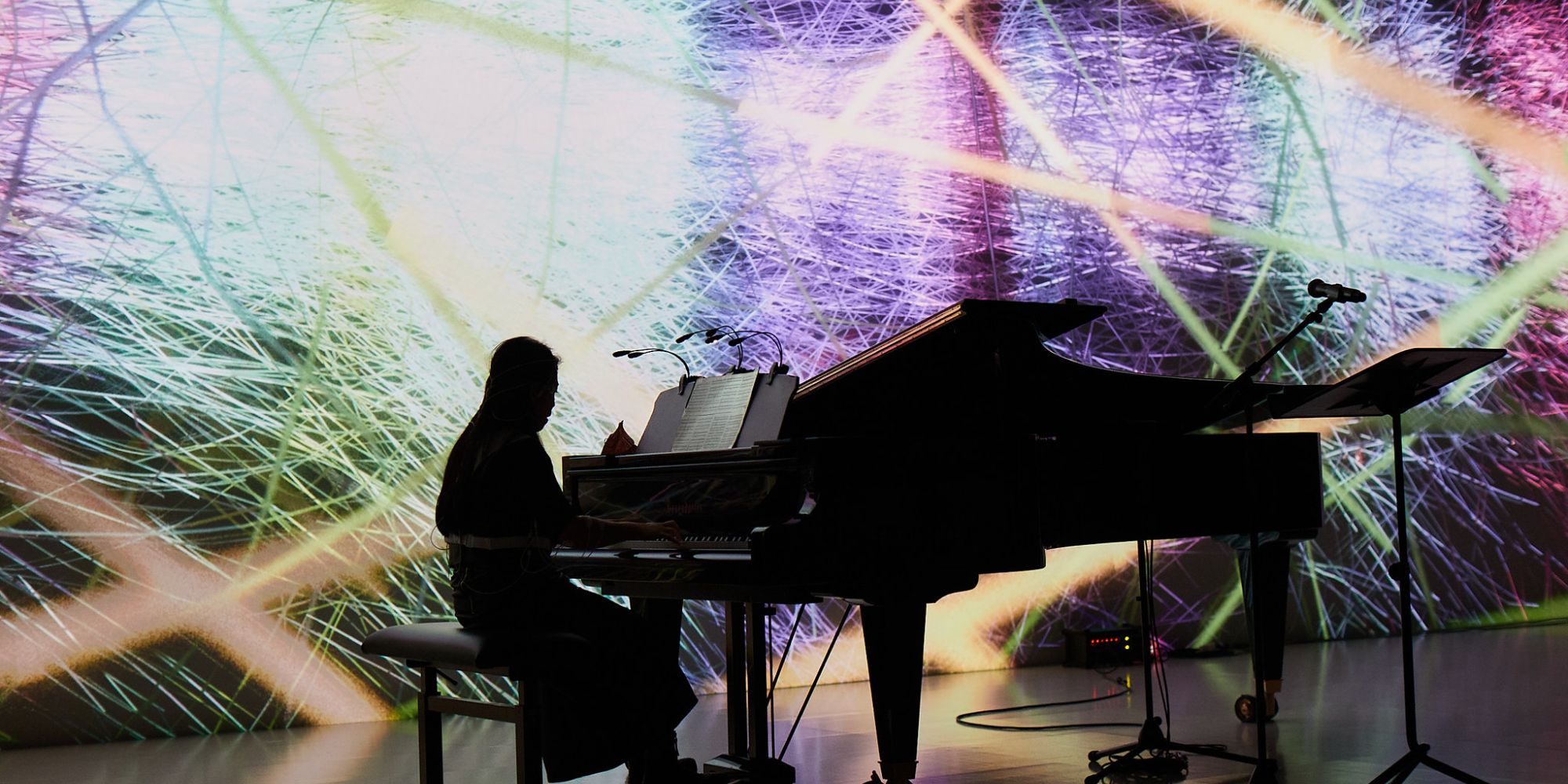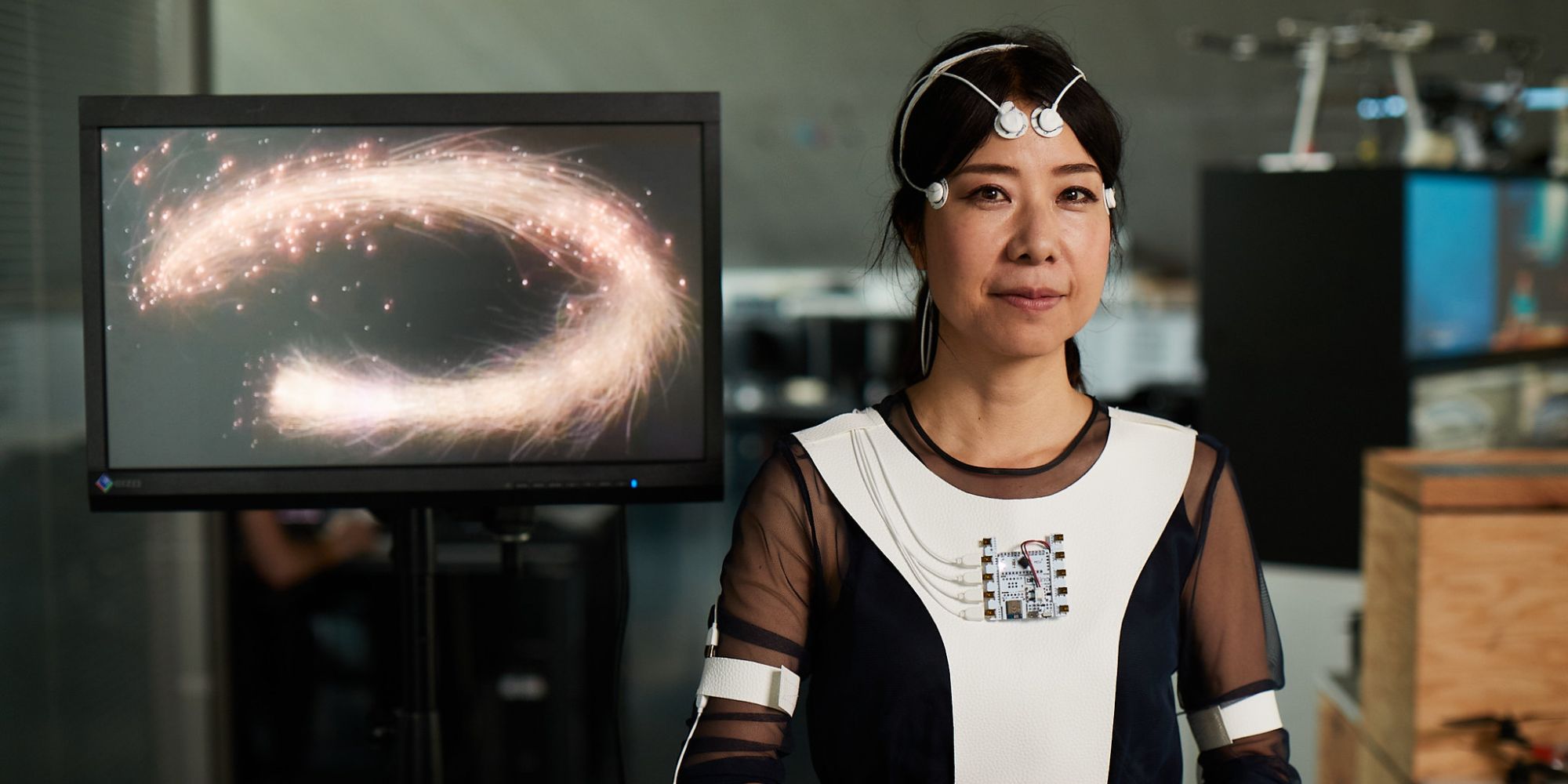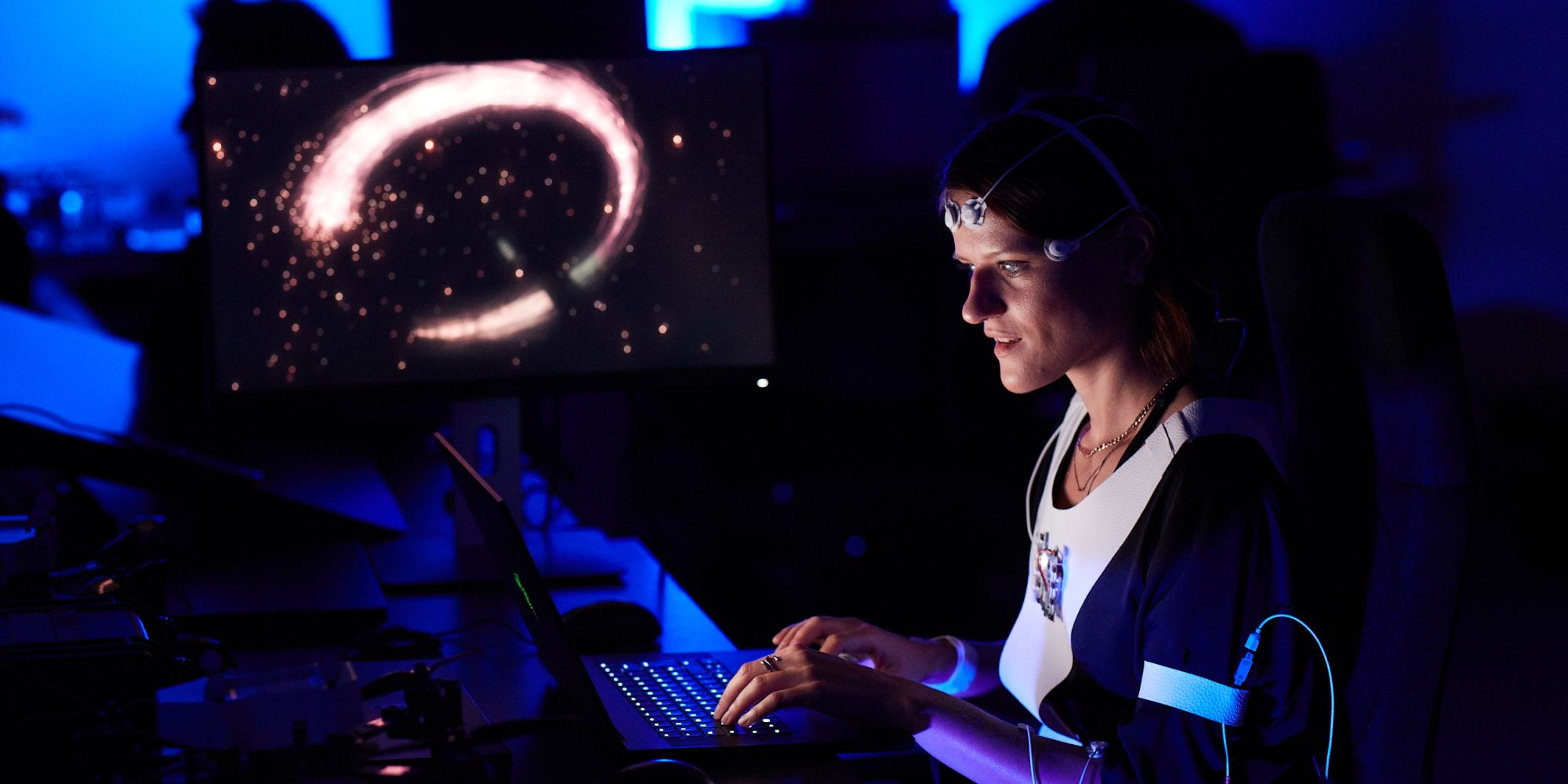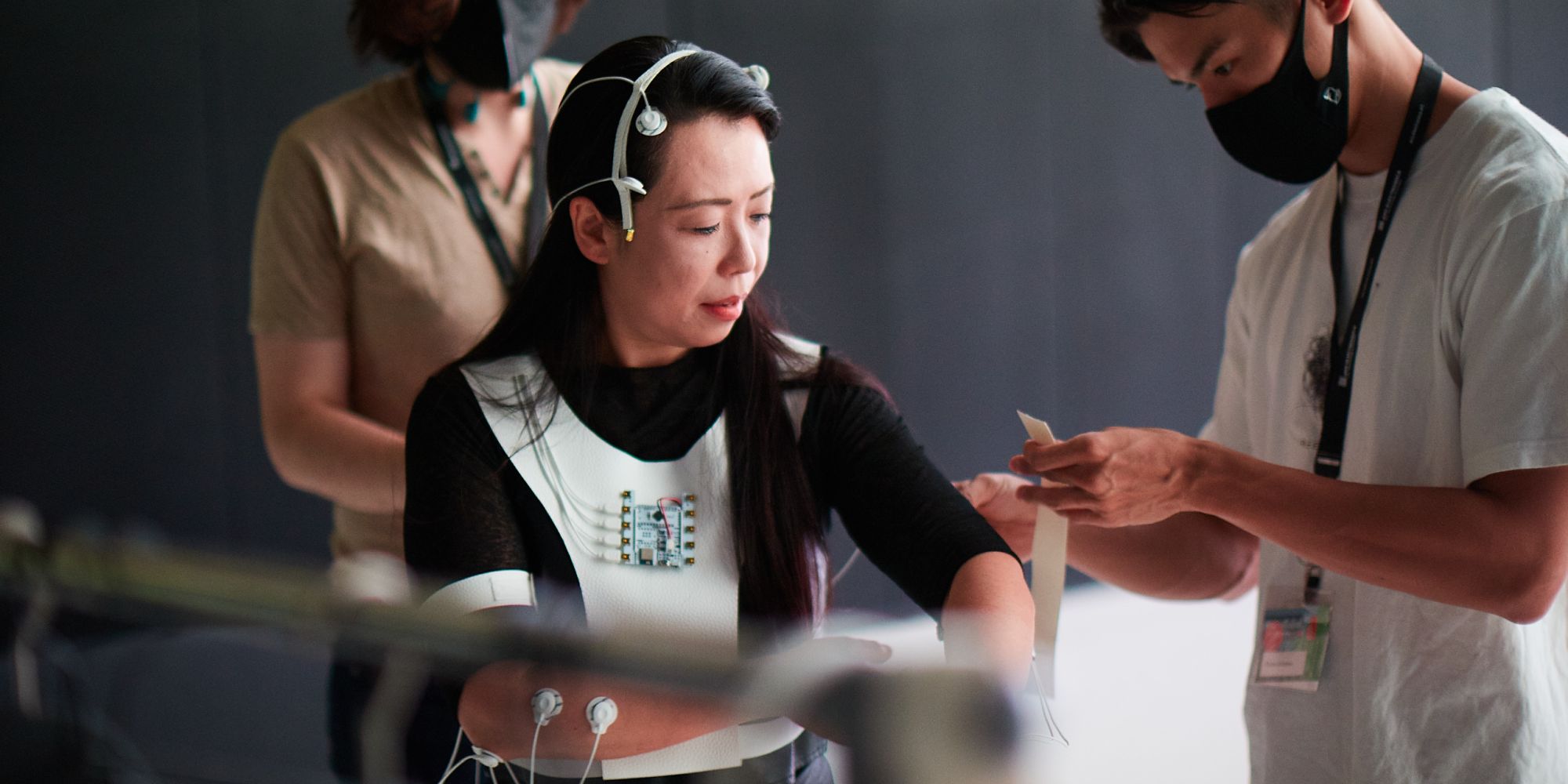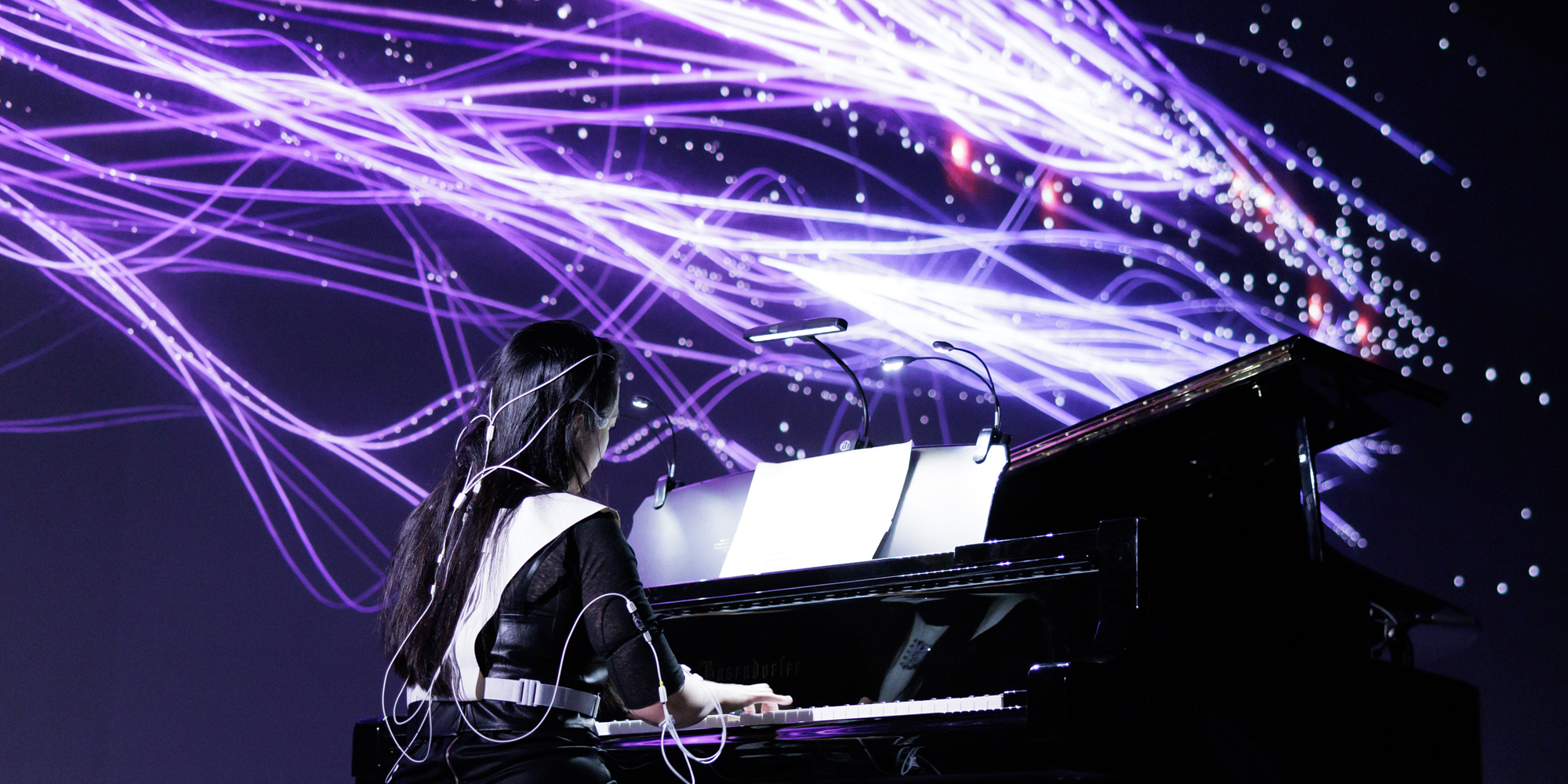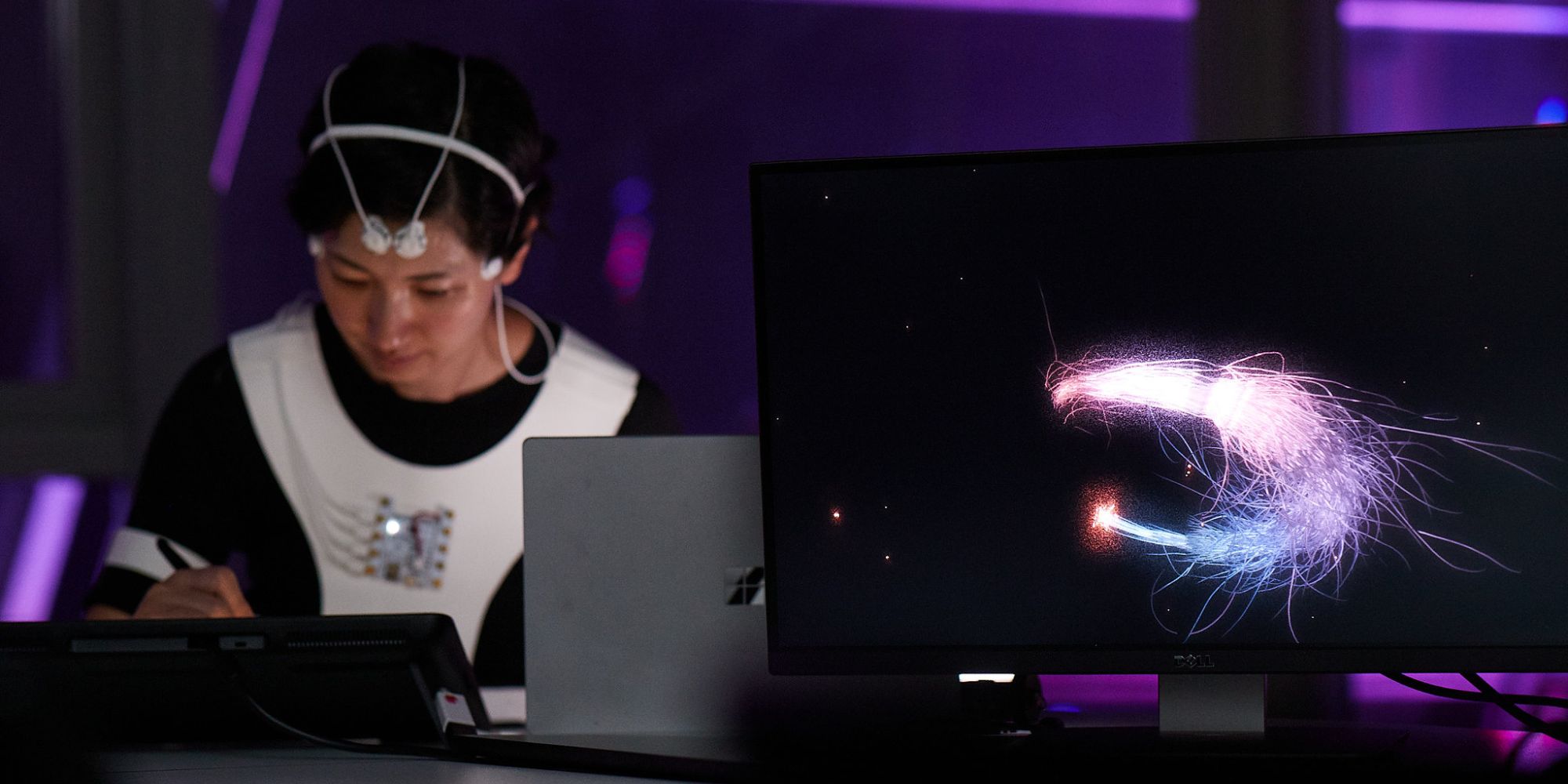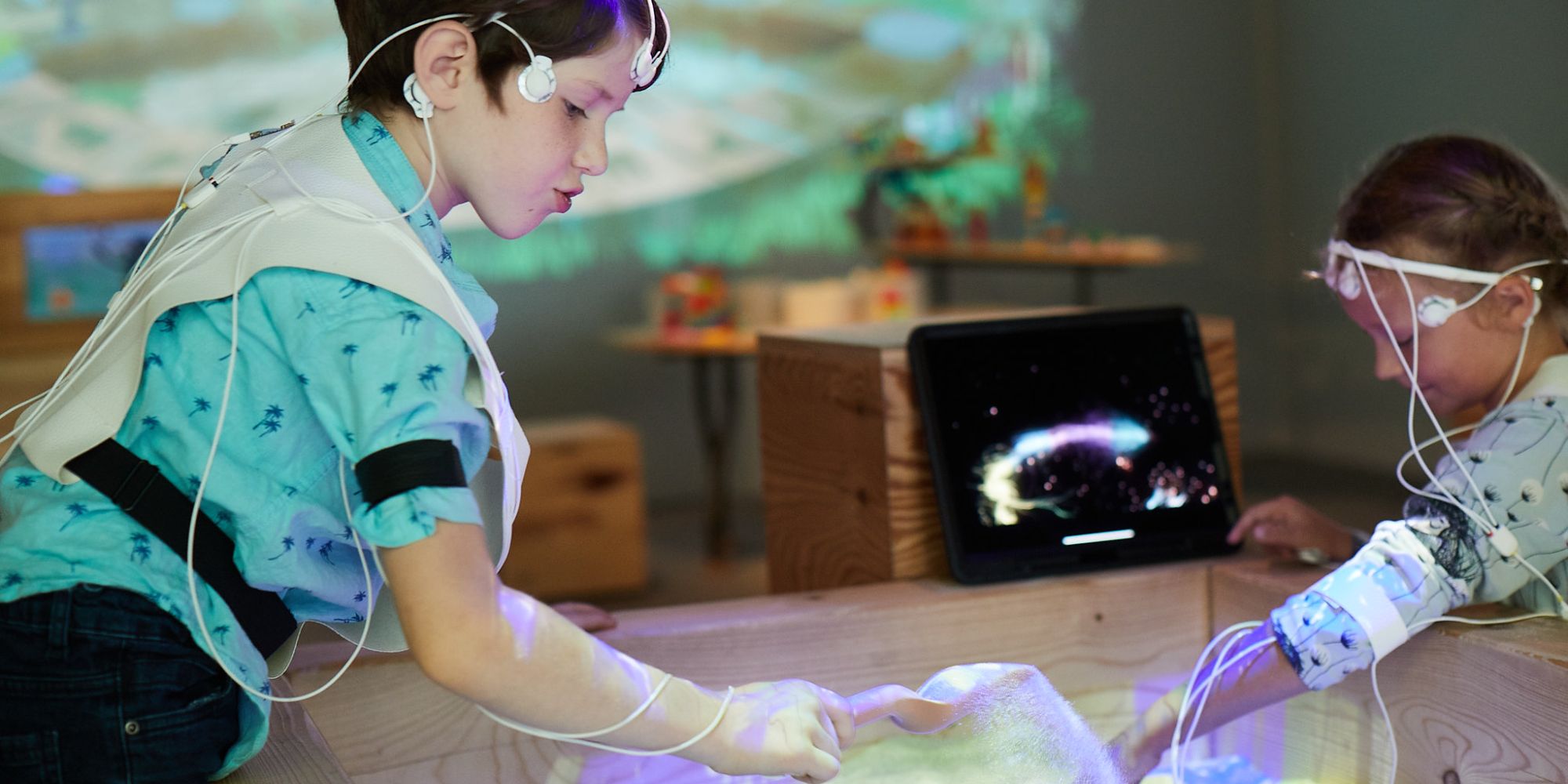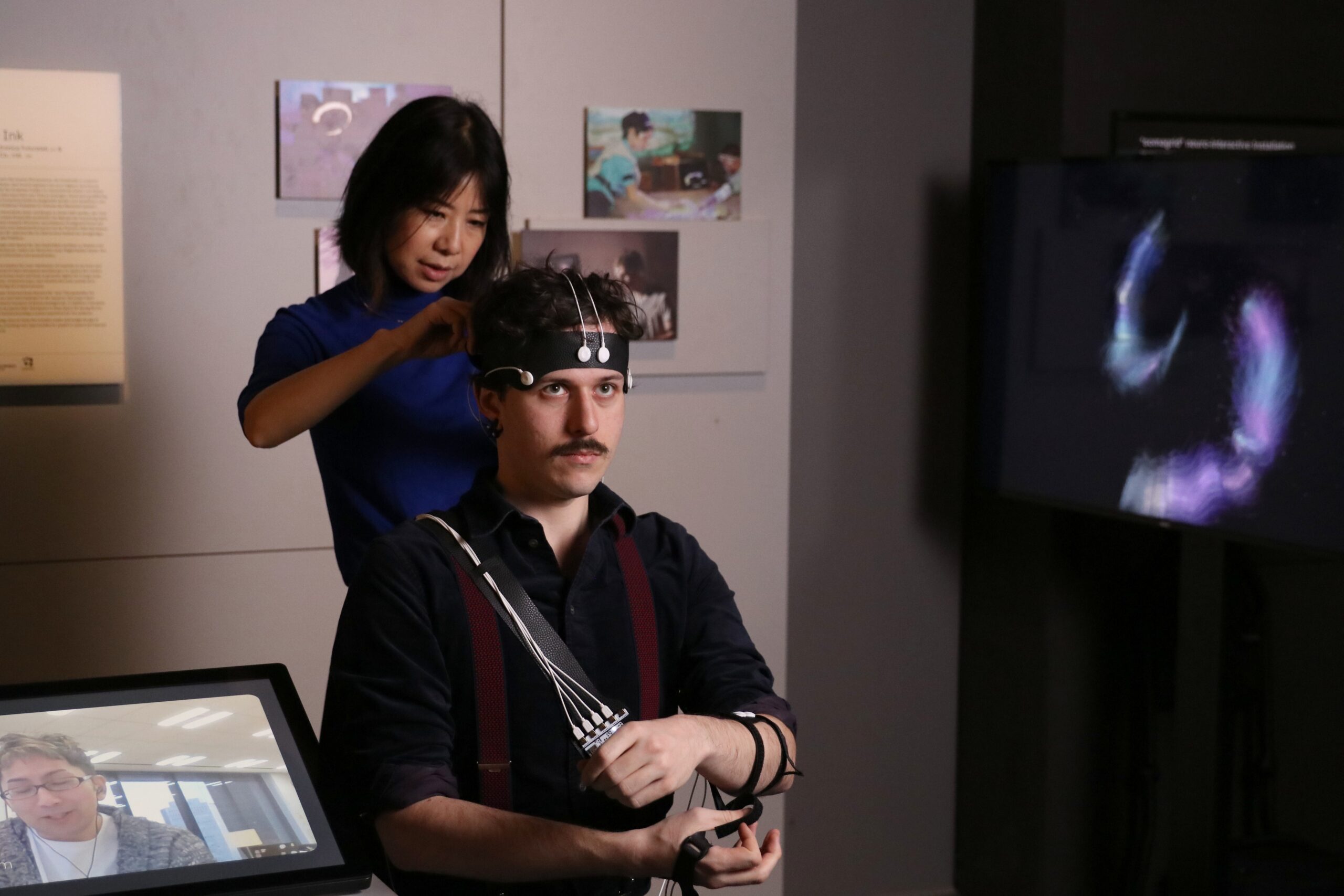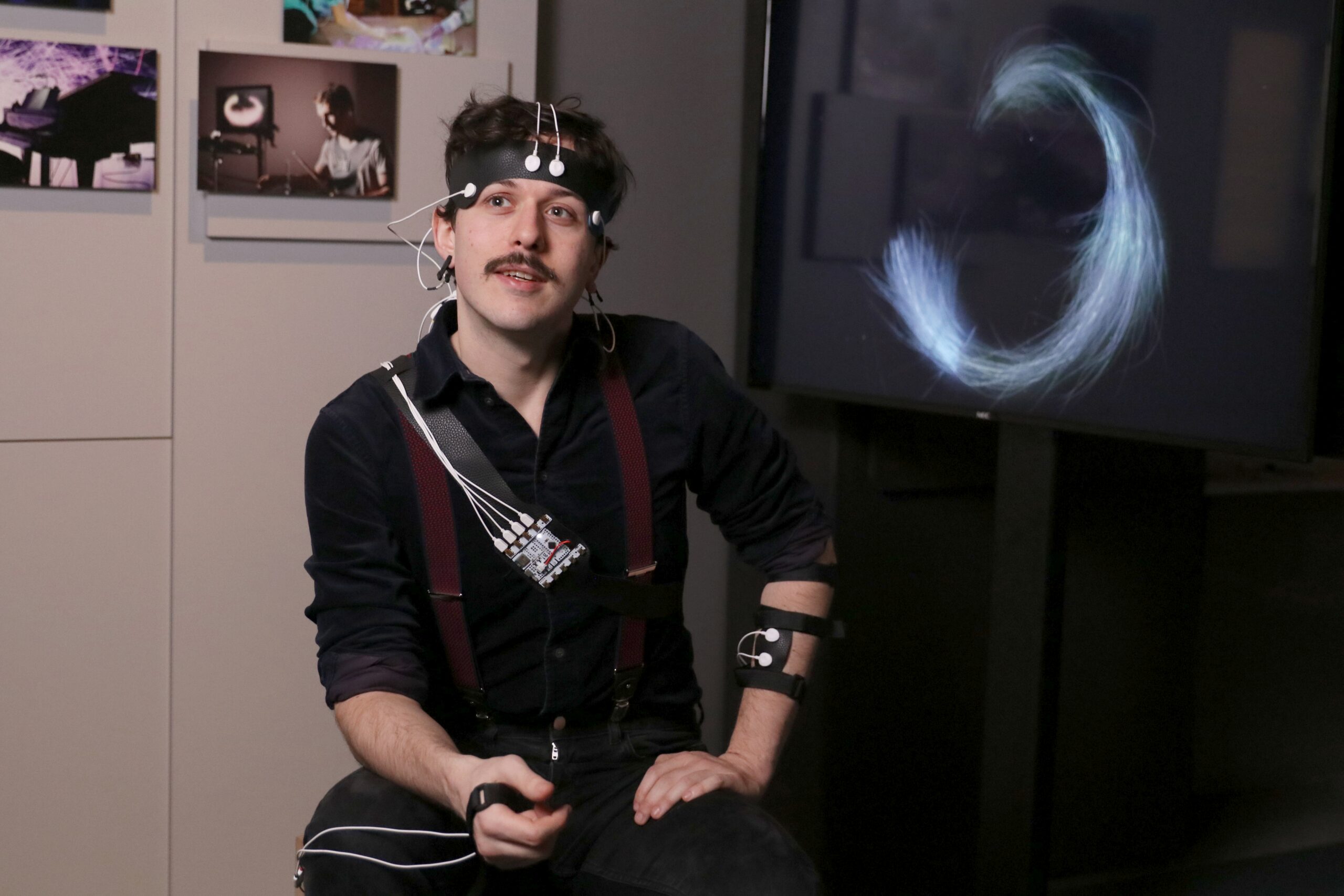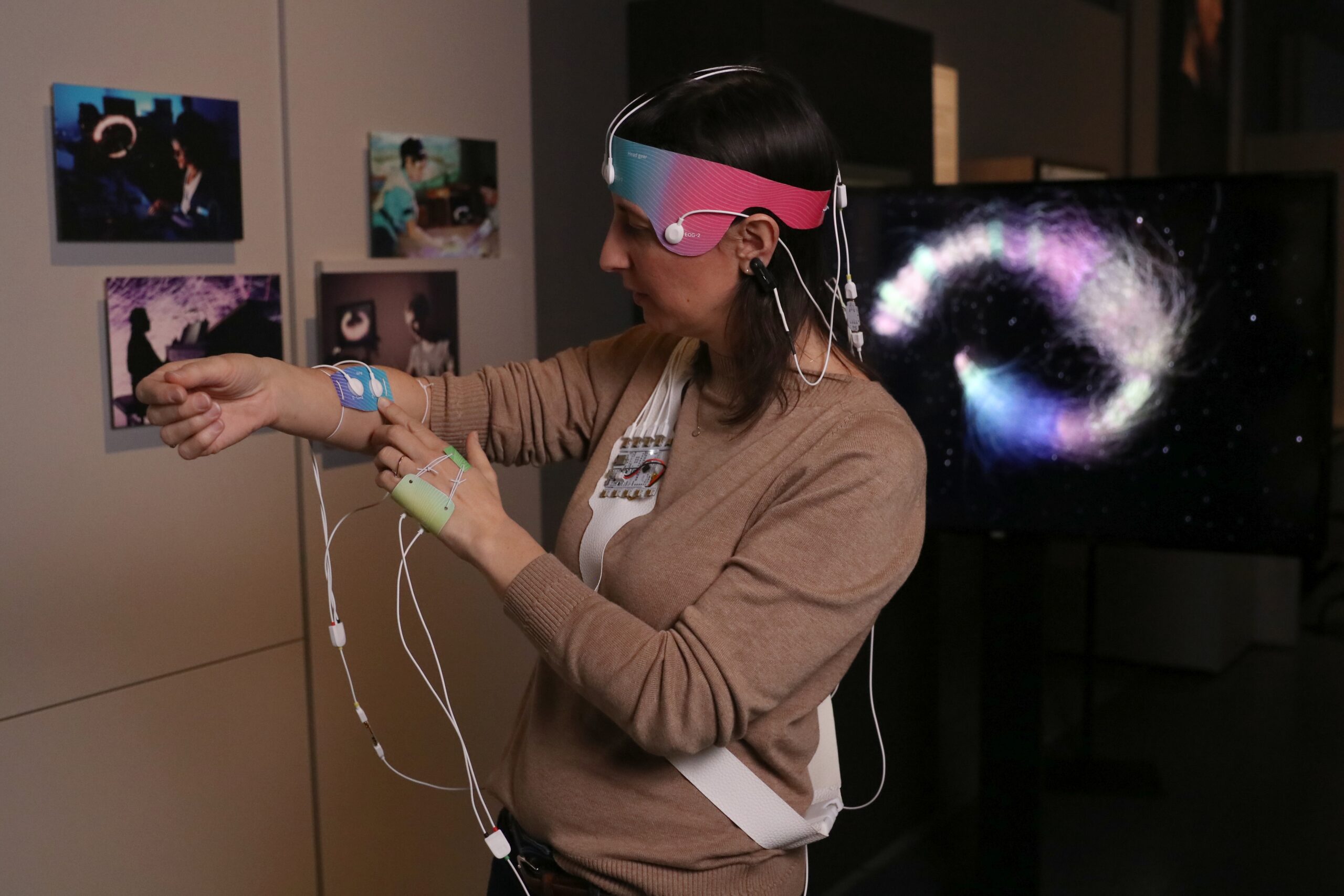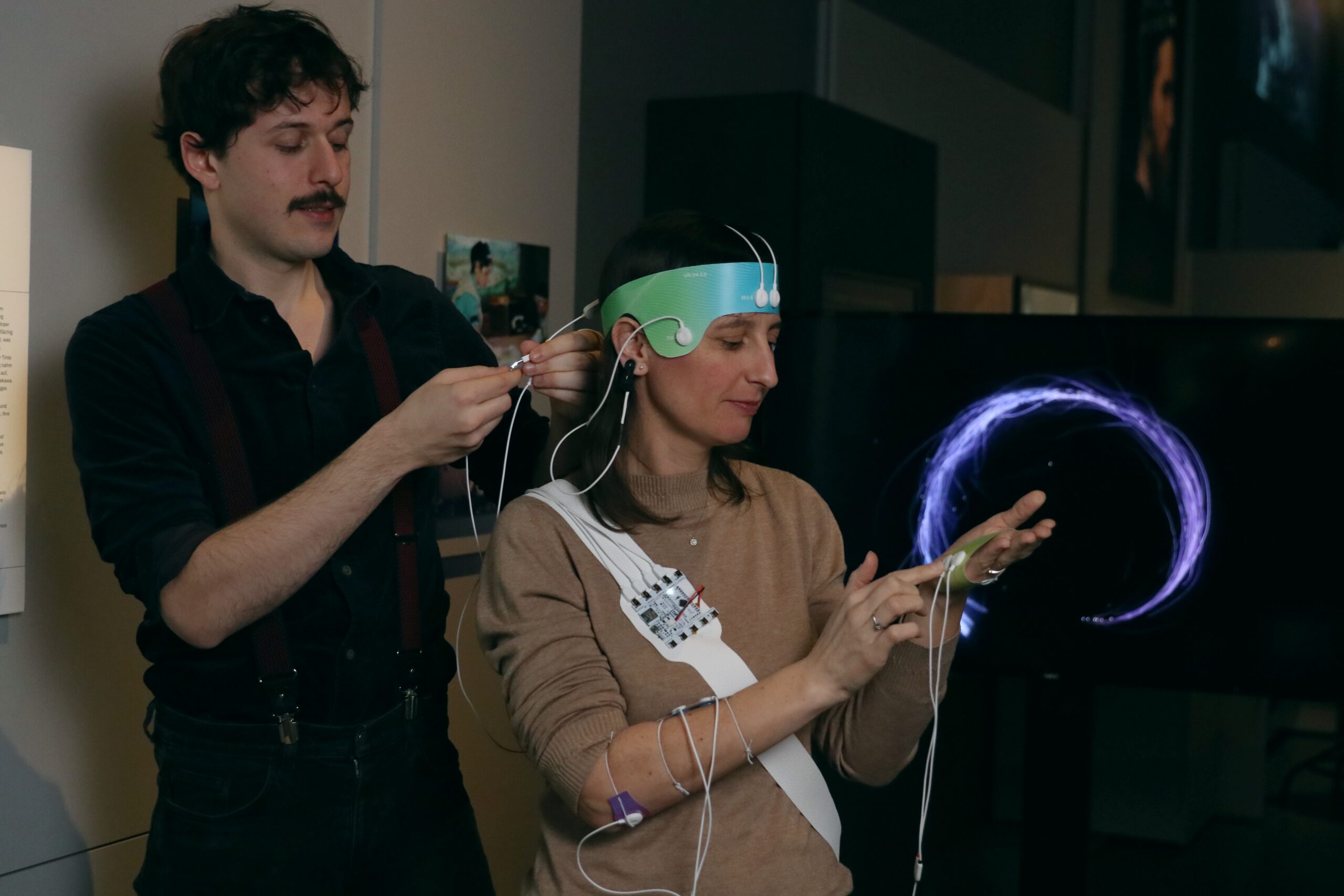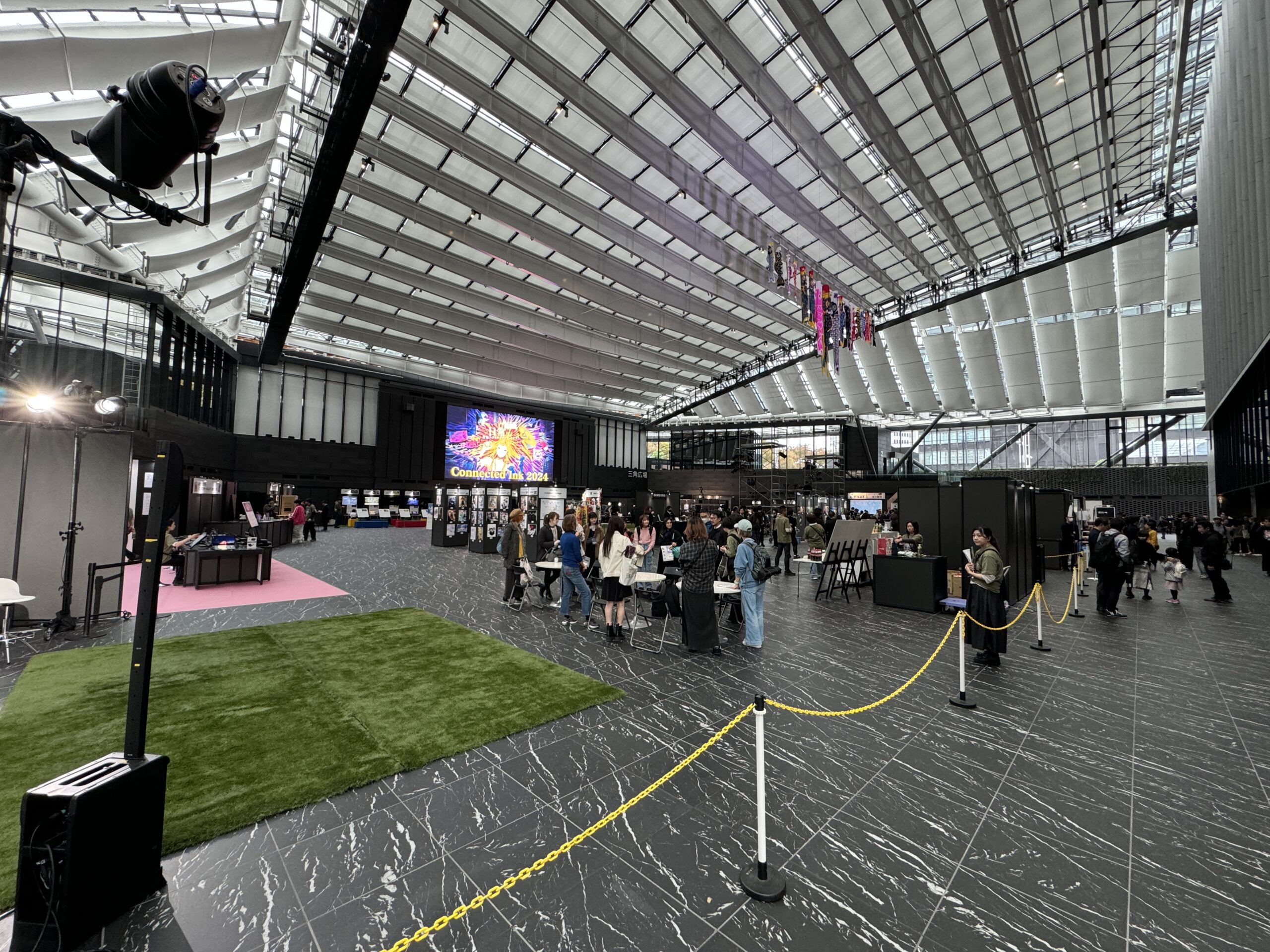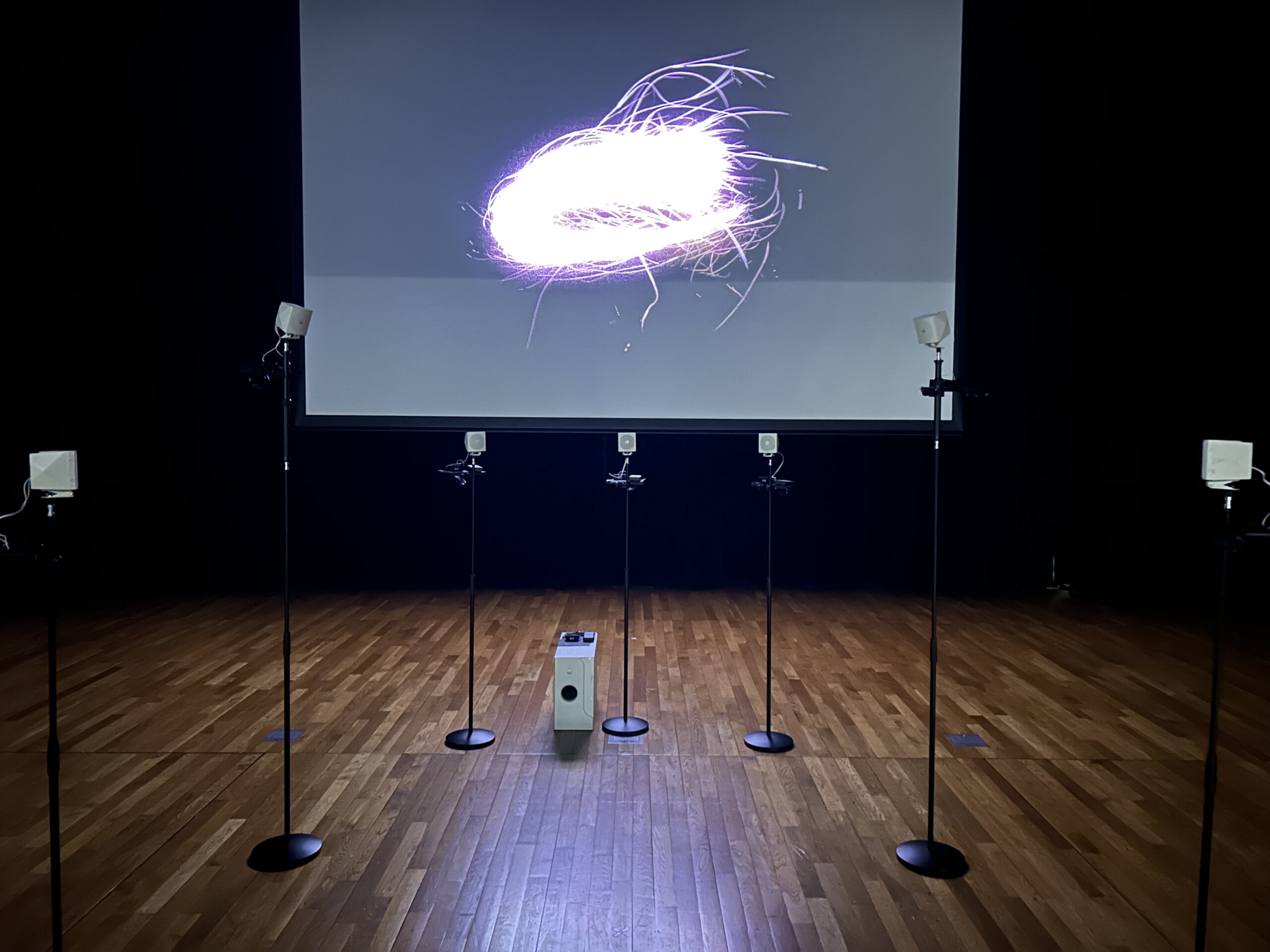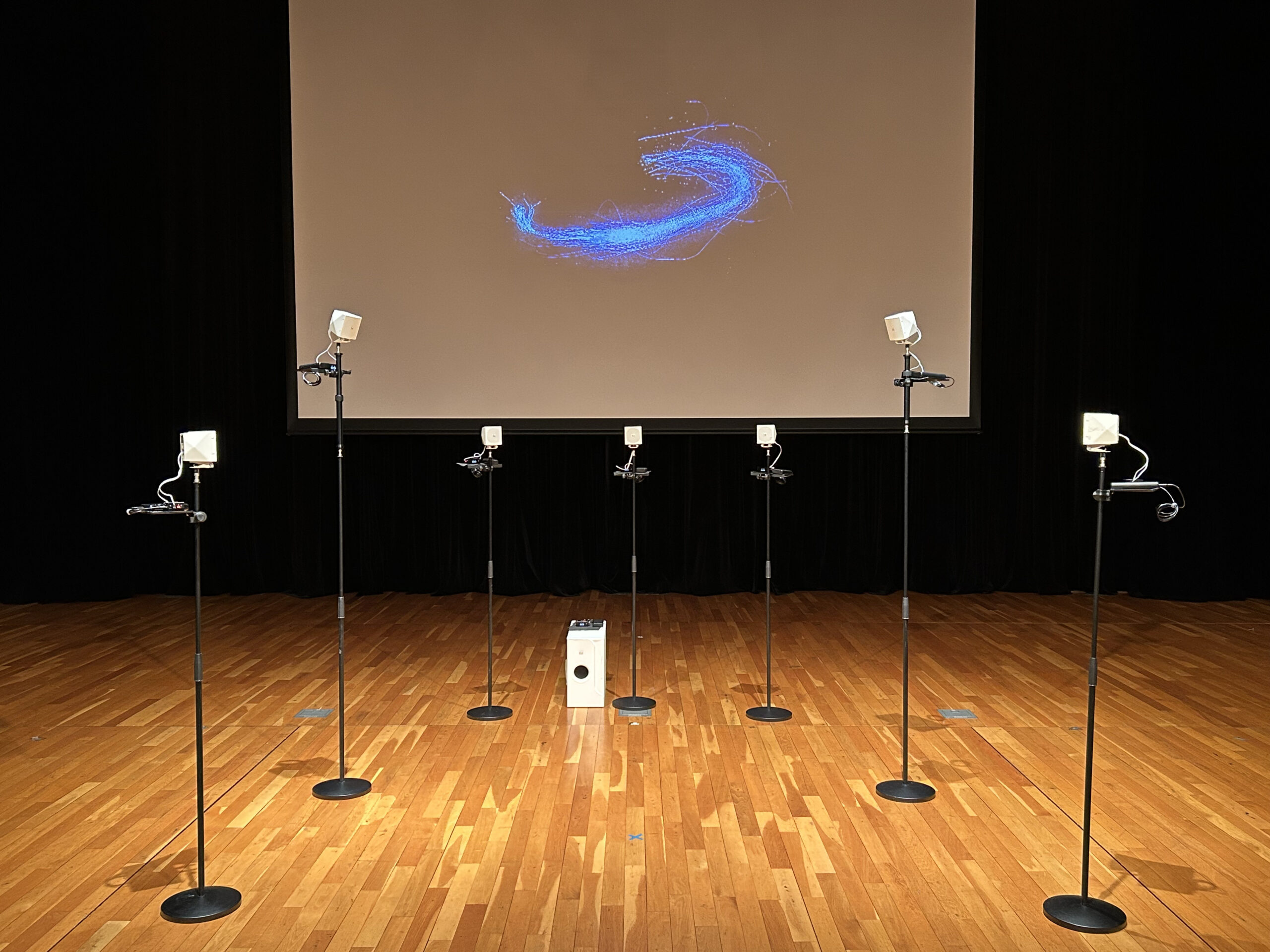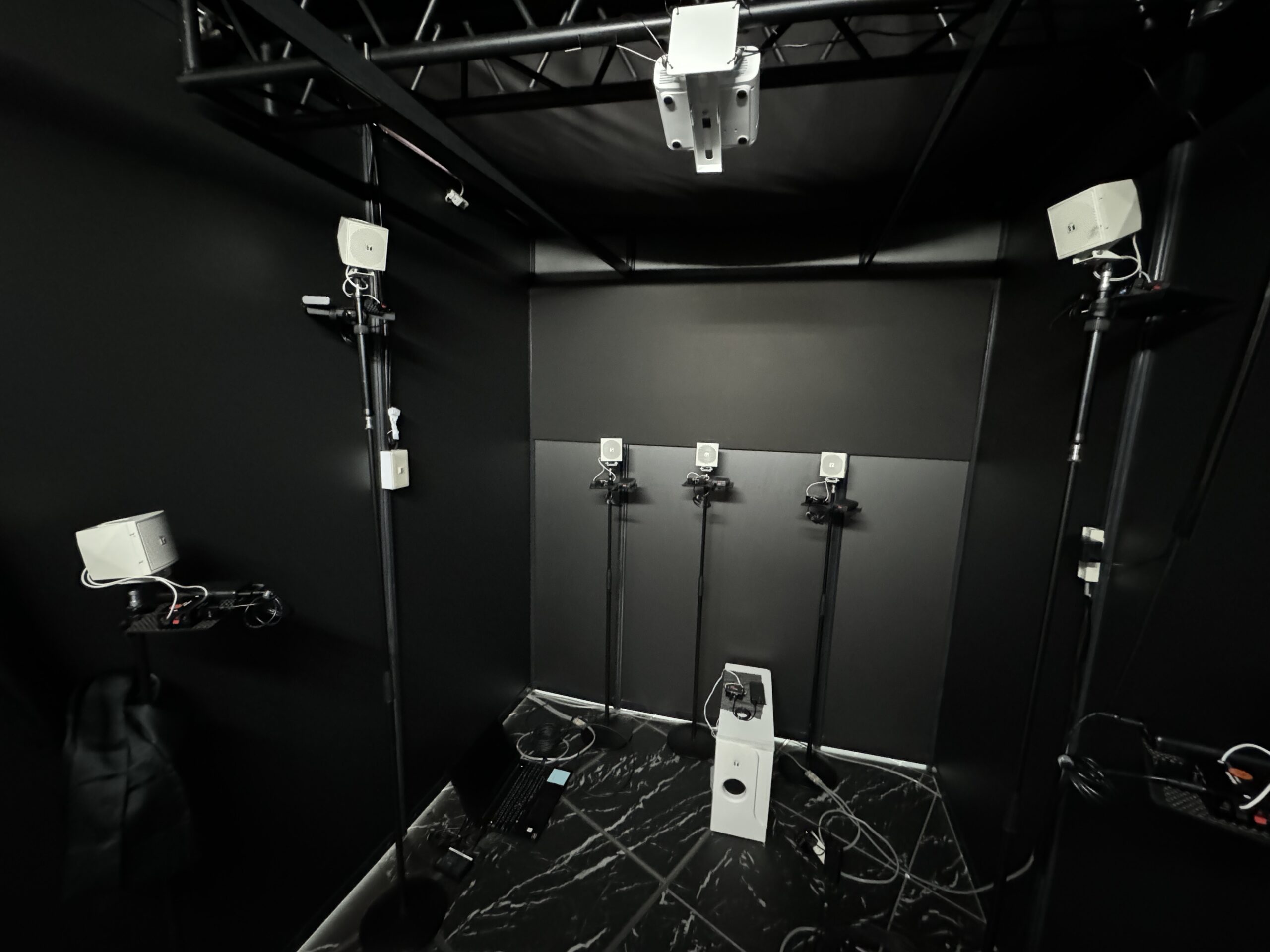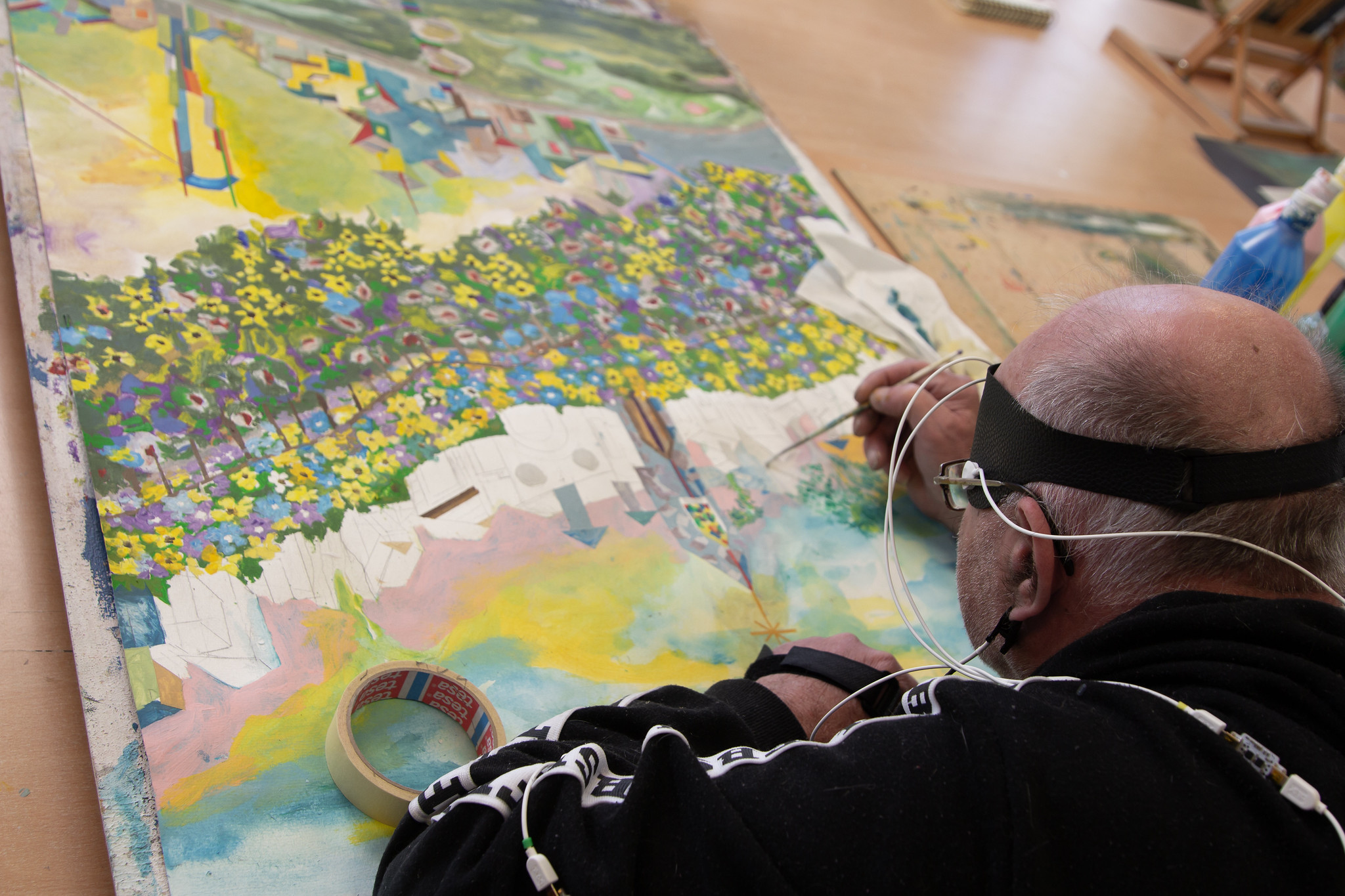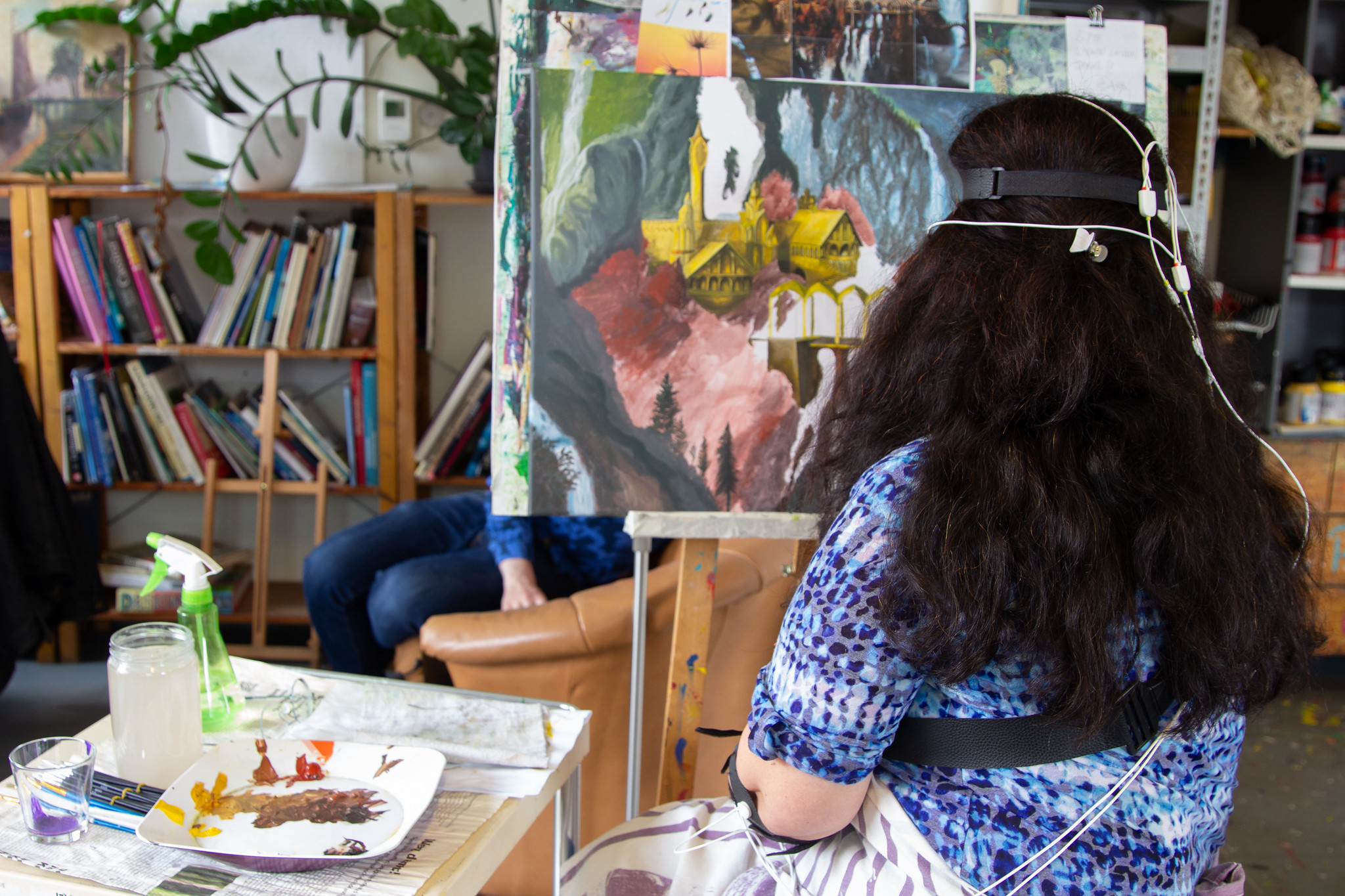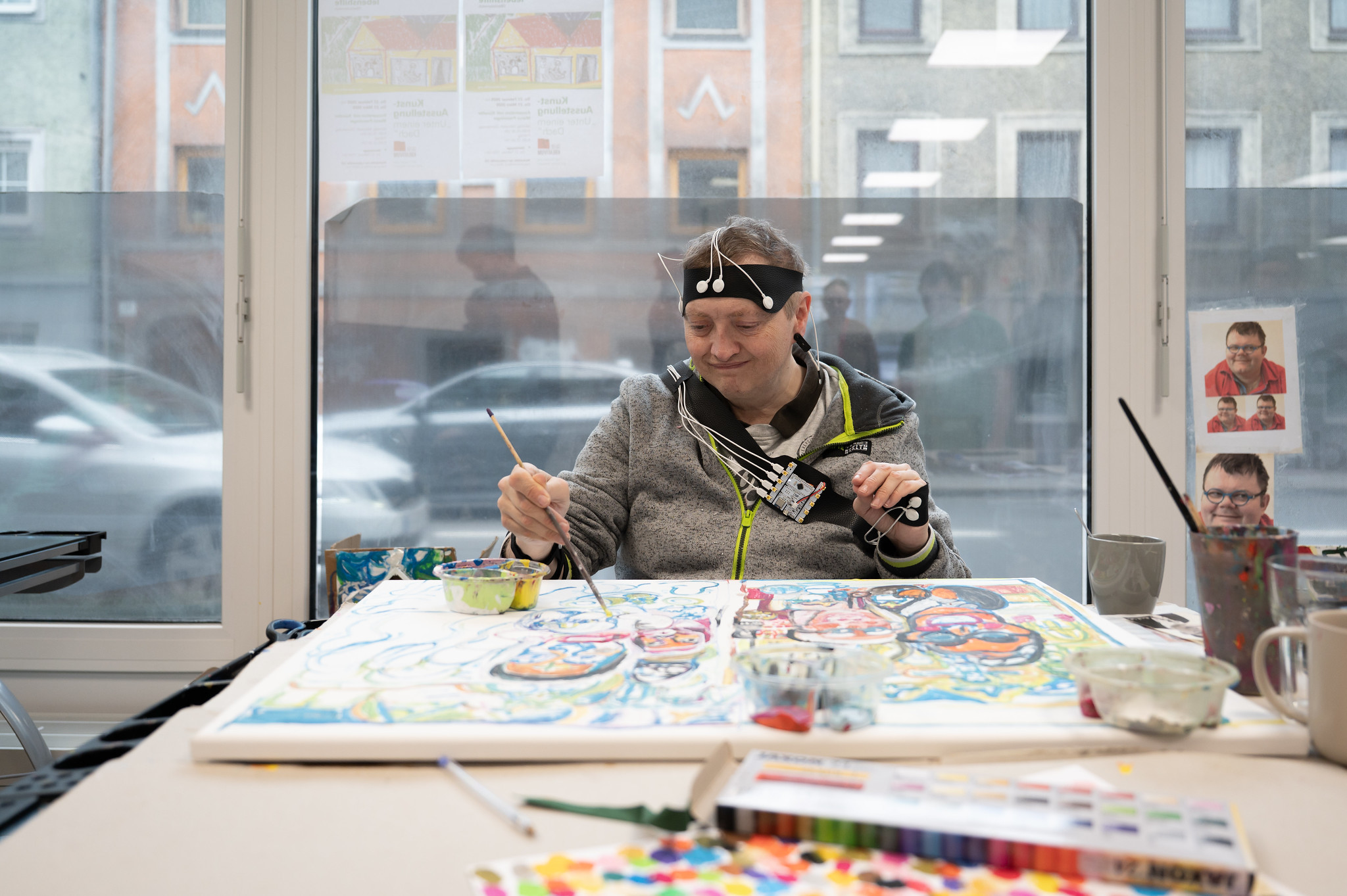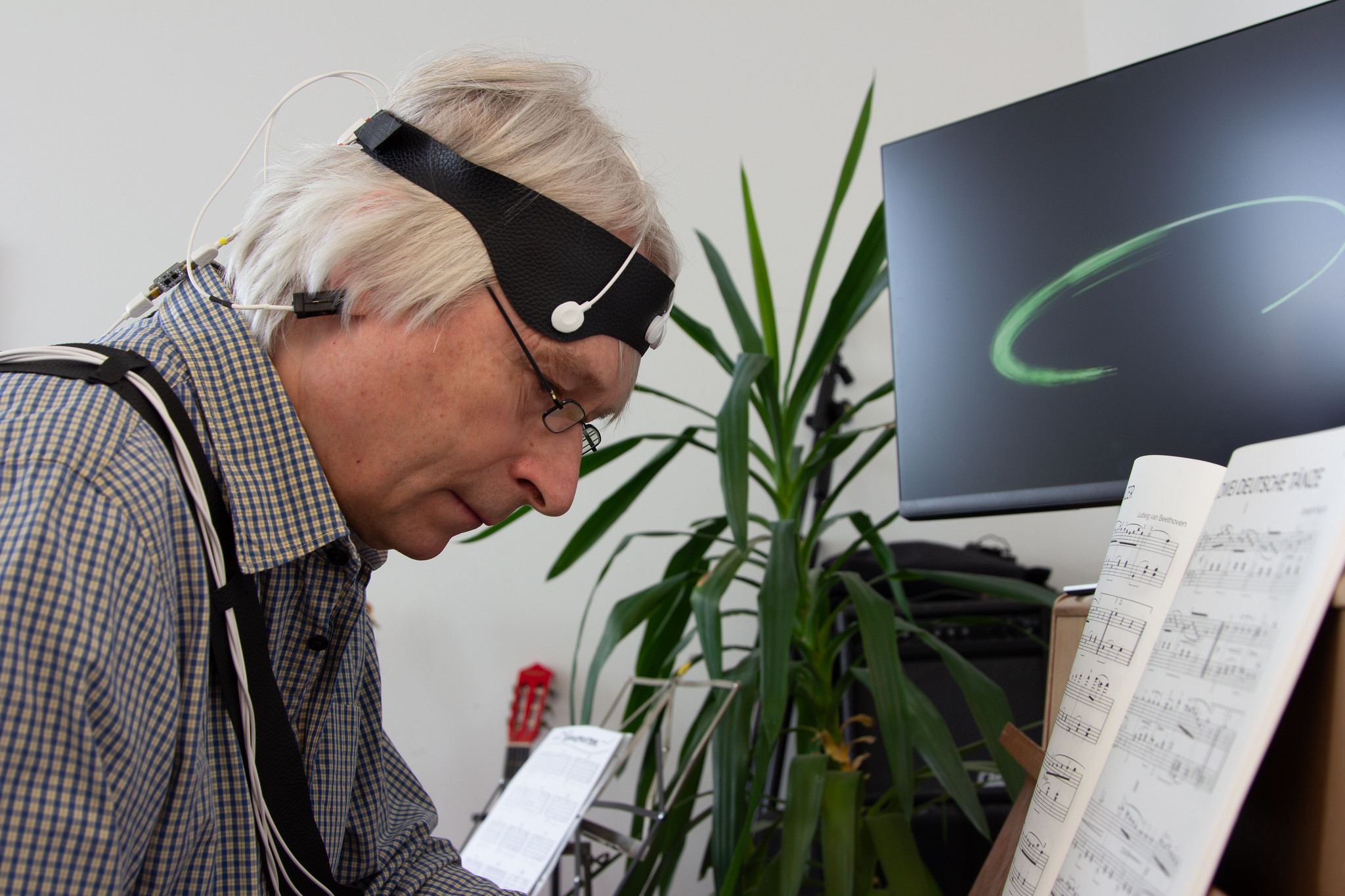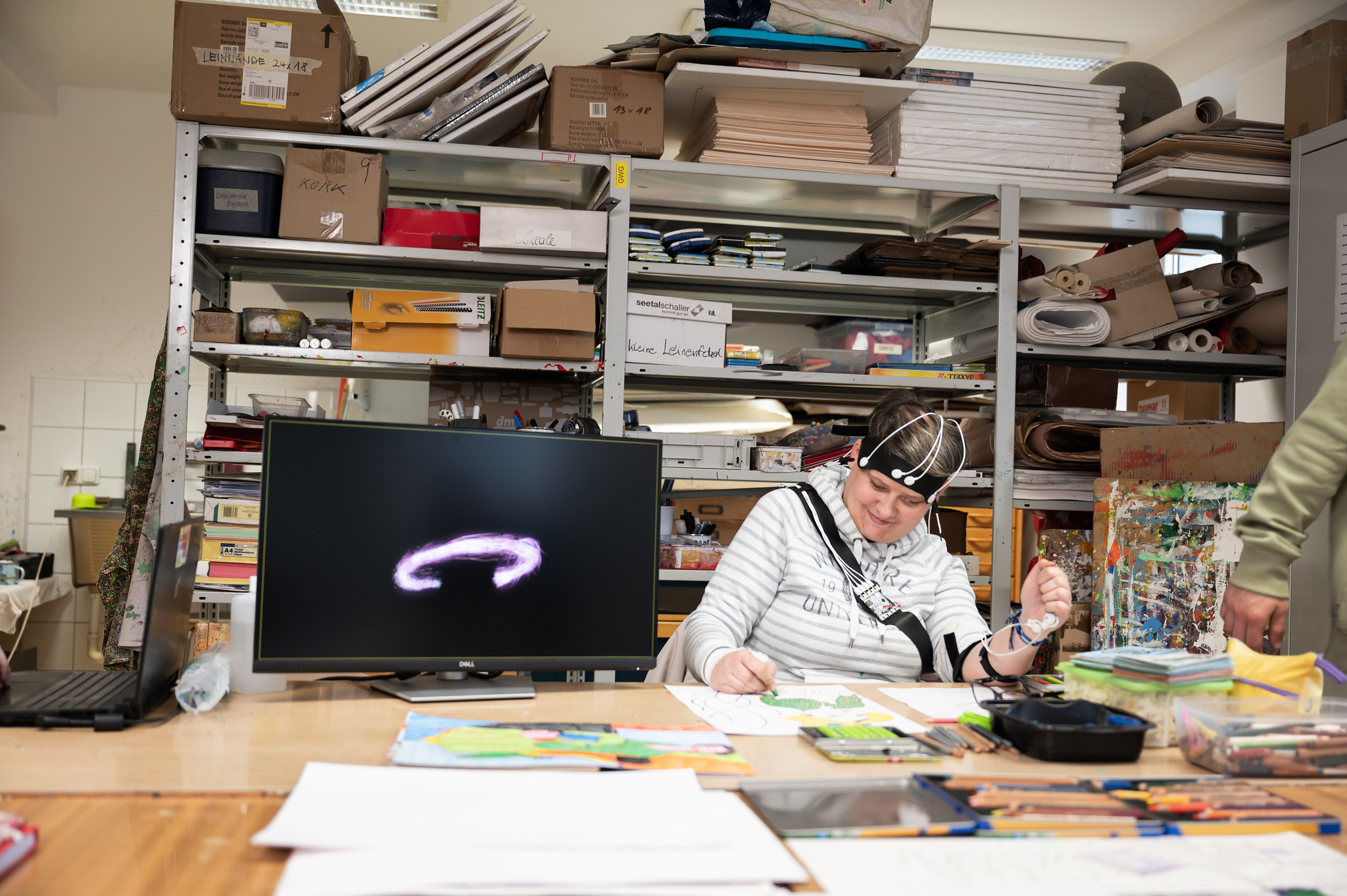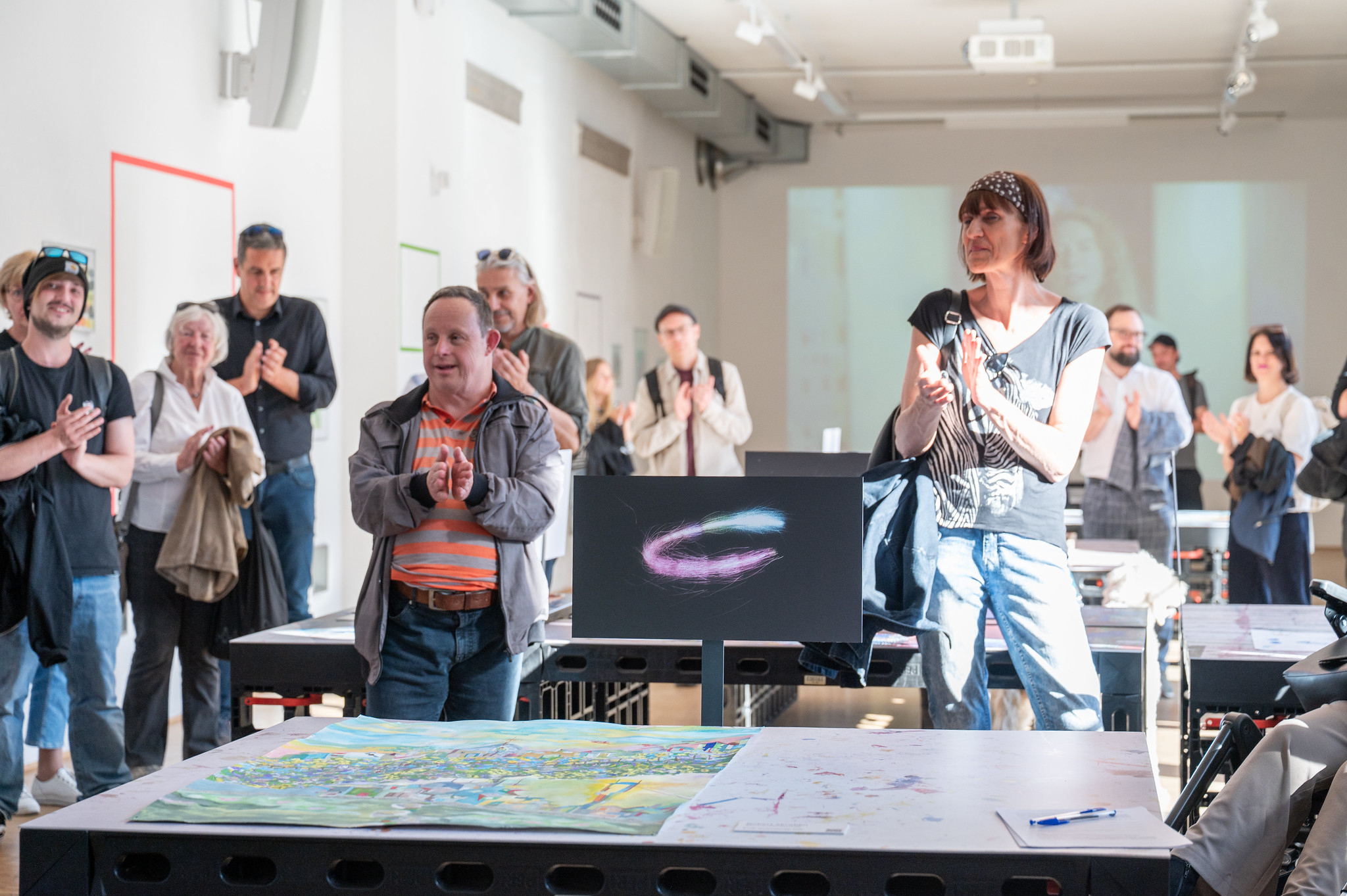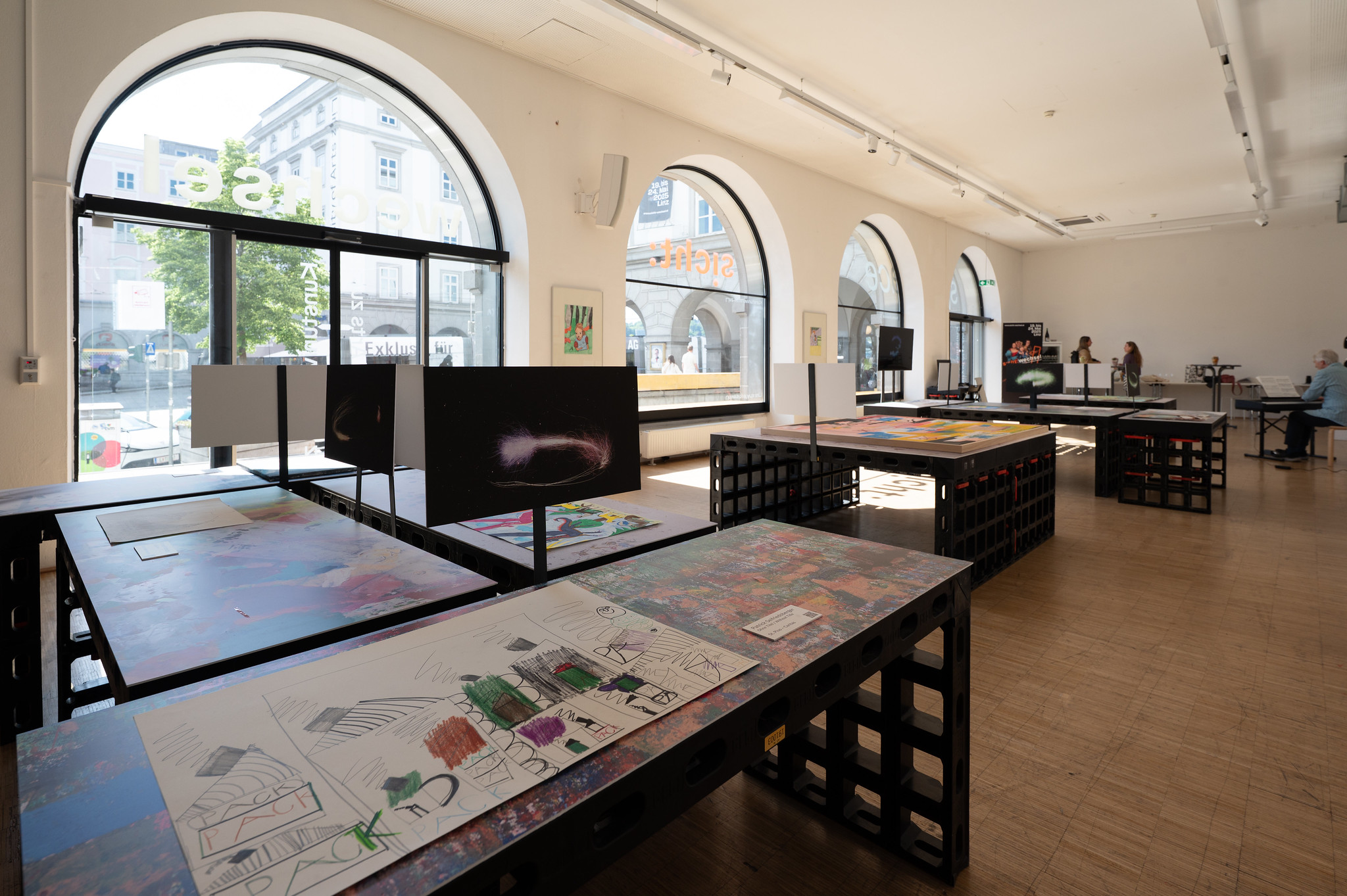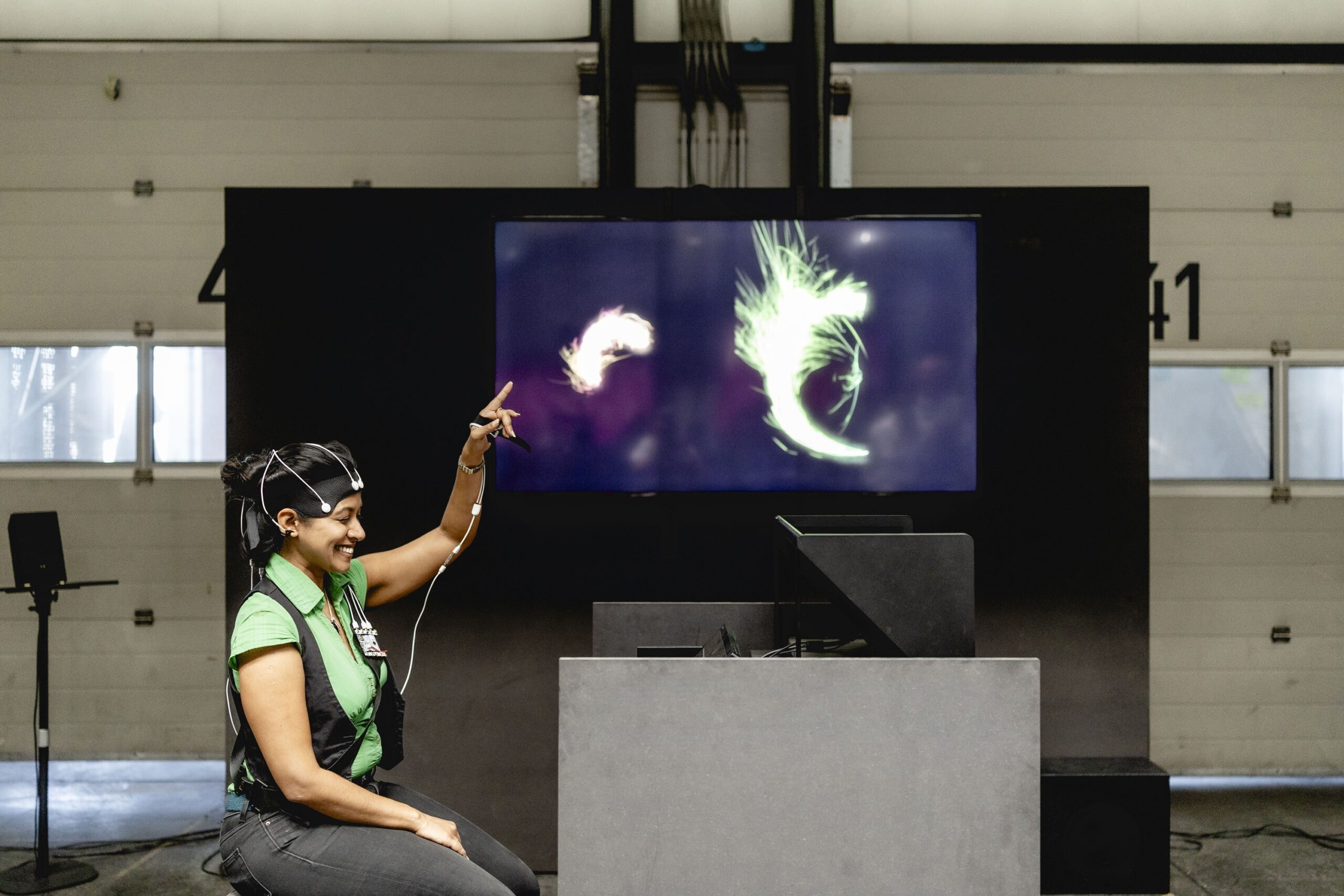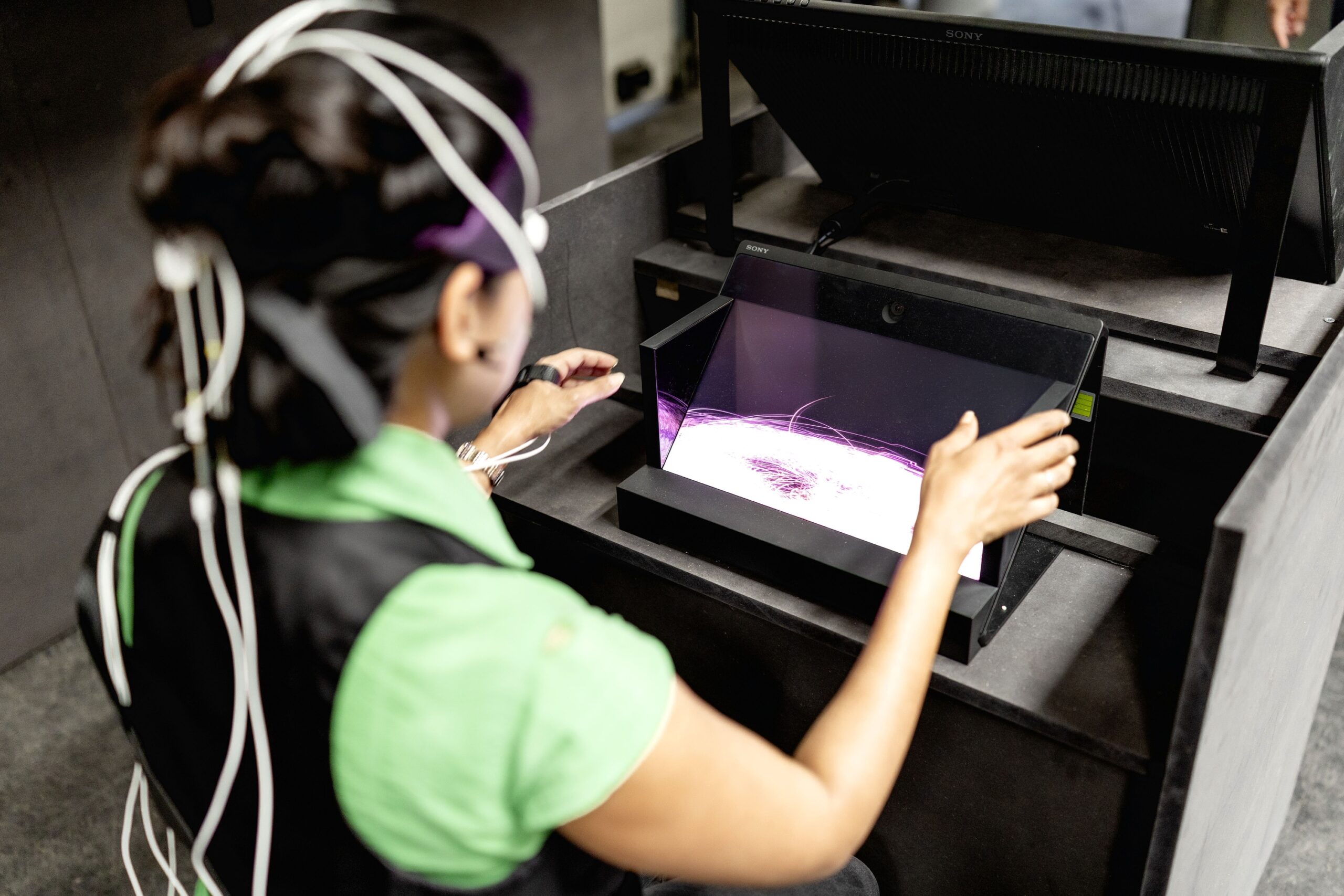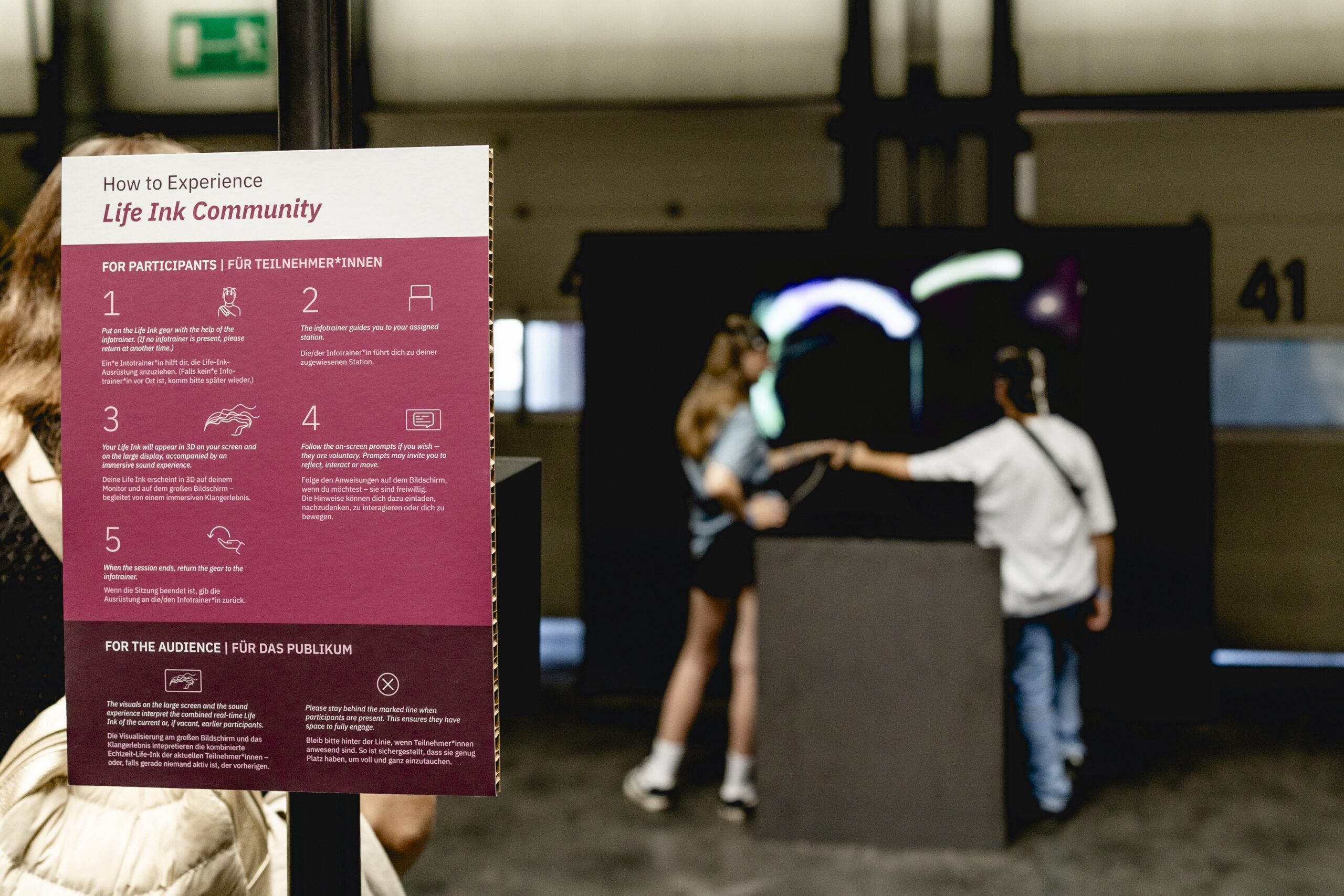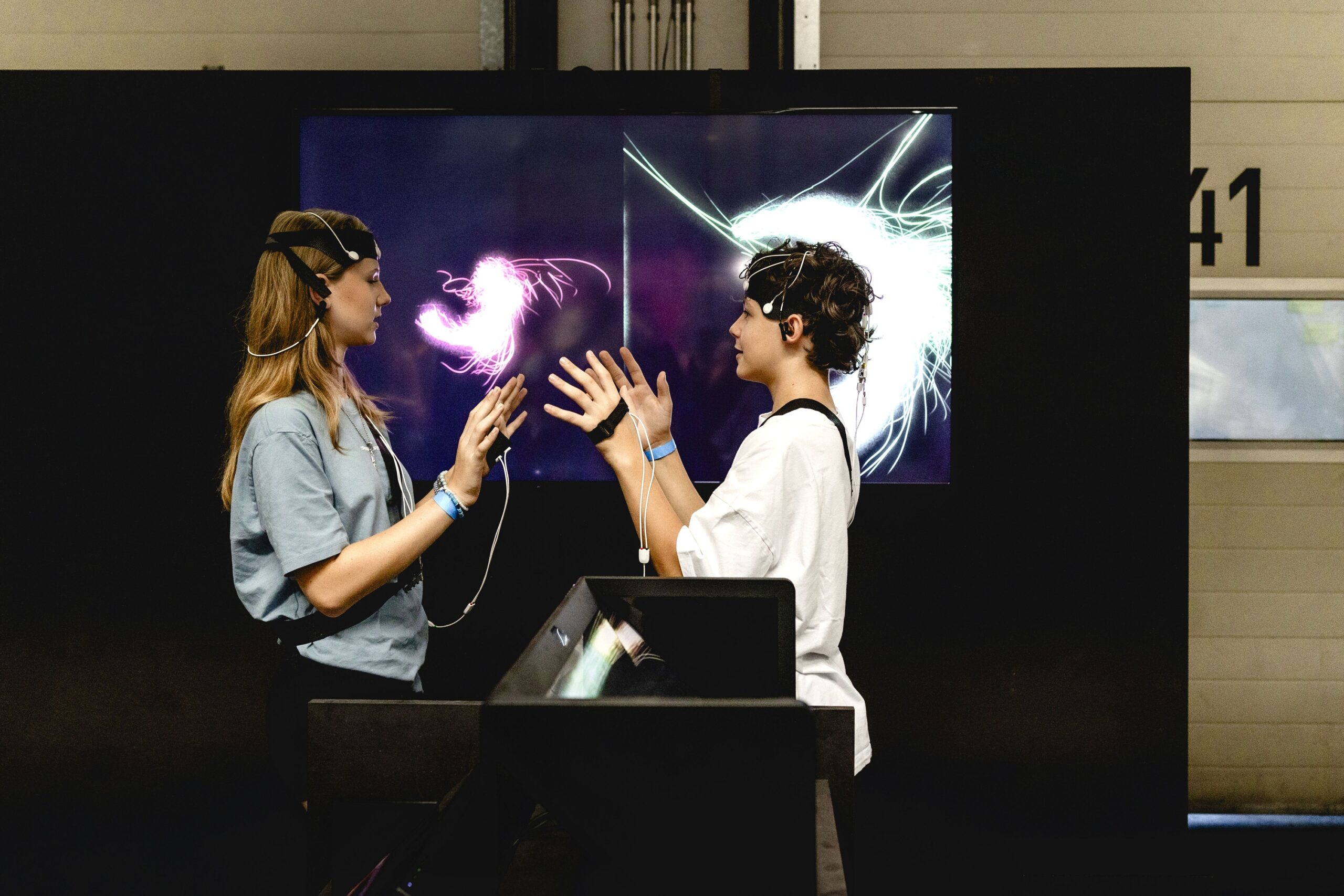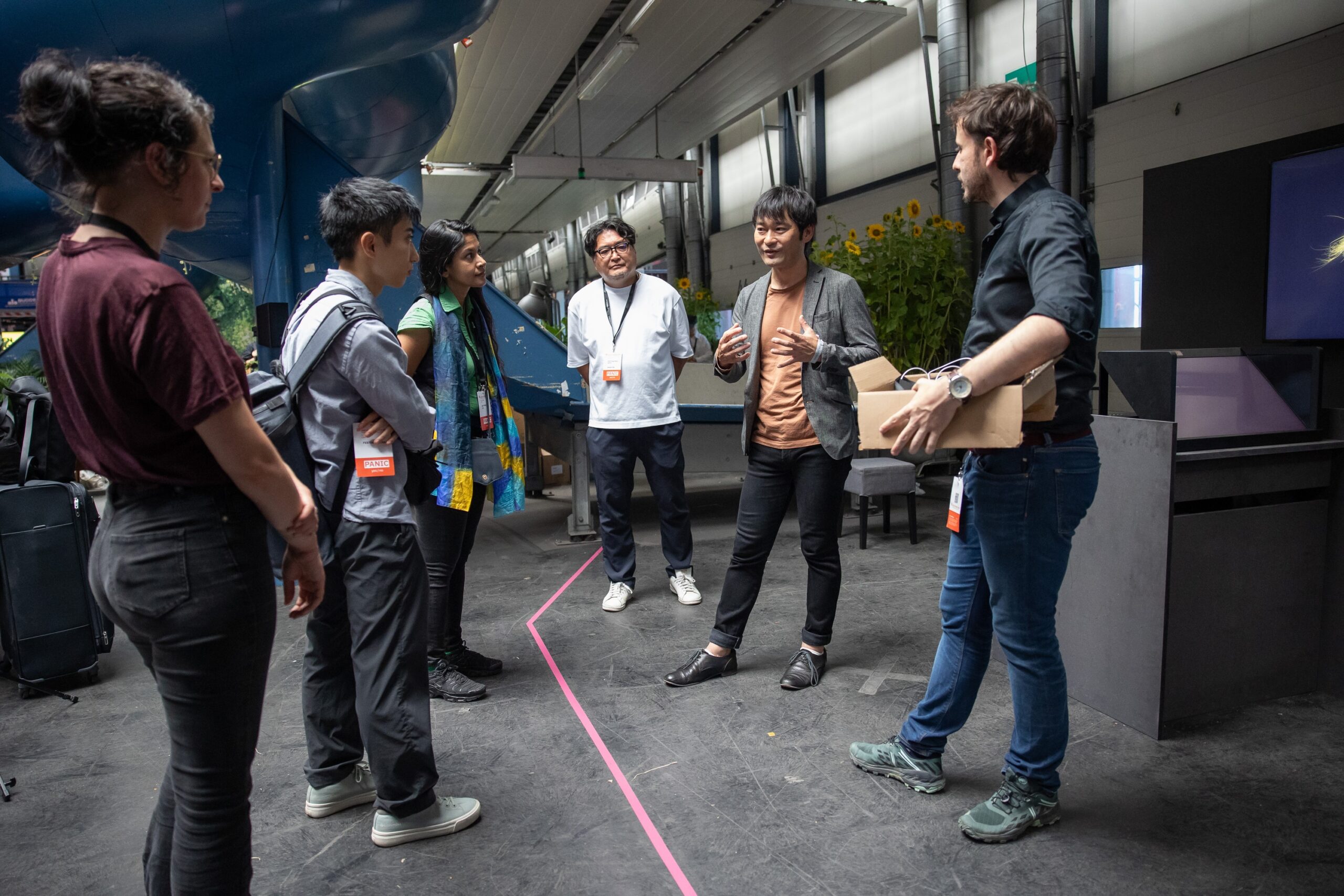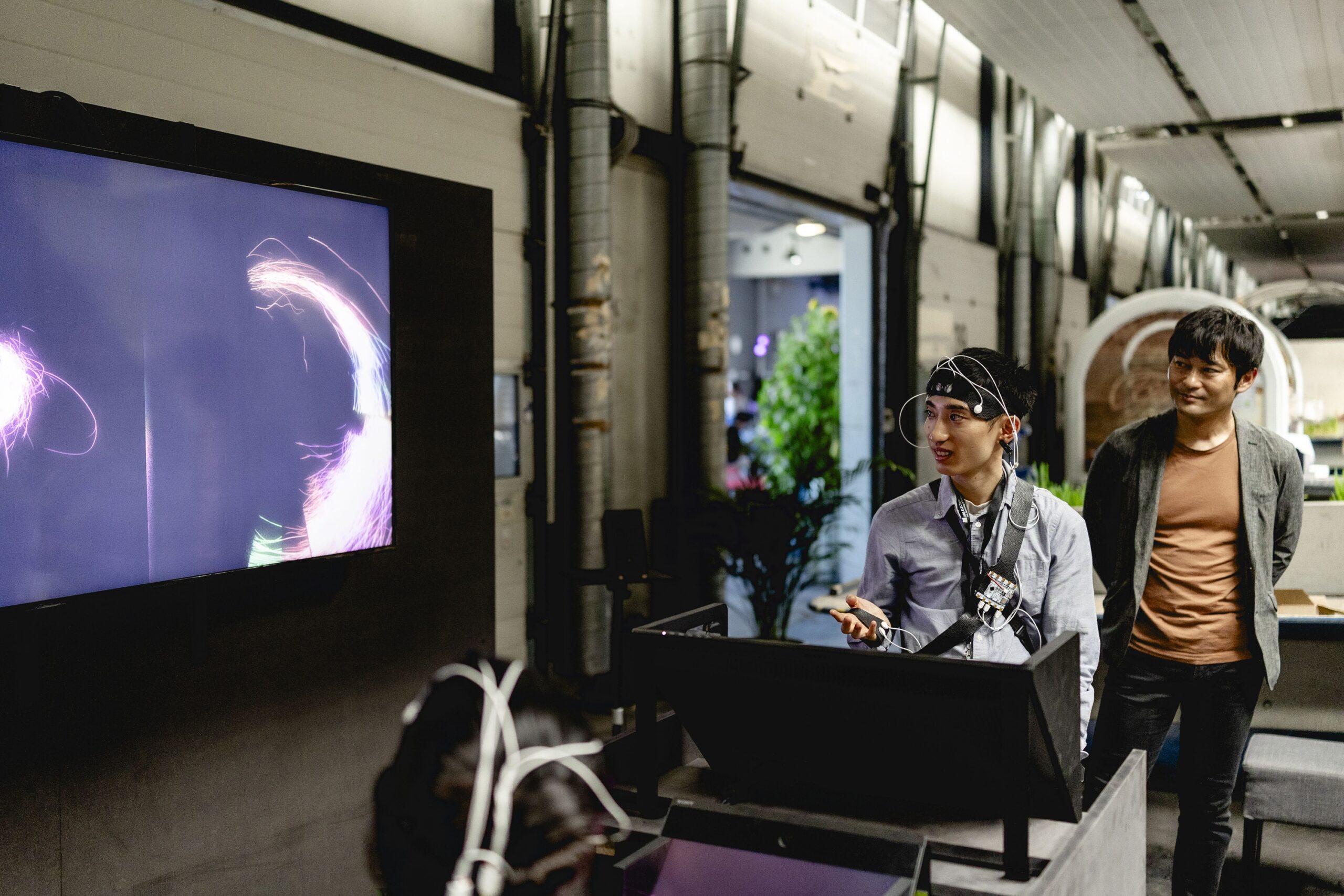Can the human mind and body become a pen that generates ink to express our creativity? Life Ink explores the inner mechanism of creativity by visualizing brainwaves and body signals as immersive three-dimensional ink – lending color to our thoughts, feelings, and creative sparks.
Life Ink is a creative research project by the Ars Electronica Futurelab in collaboration with Wacom. The joint team developed wearable gear that captures brainwaves and body signals in real time. The data is visualized as Life Ink: a constant stream of three-dimensional immersive ink that expresses our emotions and creative moments in a completely new form. The prototype has since been expanded to make it even more accessible to a wider audience. Life Ink 2.0 brought more user-friendly equipment while Life Ink 3.0 introduced a sound component. In 2025, LIFE INKlusive invited artists with and without disabilities, while Life Ink Community features glass-free stereoscopic 3D and surround sound.
Life Ink is the culmination of a three-year collaborative research project by the Ars Electronica Futurelab with leading pen and tablet manufacturer Wacom. The goal of the project, called Future Ink, was to explore the future of creativity in relation to various aspects of ink – from painting with glowing drones to free-growing messages made of living ink.
To capture the data for Life Ink, the team developed a set of wearable gear that detects signals such as brain waves, eye movements, muscle movements, and the activity of sweat glands. Each aspect changes the Life Ink stream, such as the emergence of the neuron-like branches, the large sparks, small glitters of sparks, the brightness of the sparks, as well as the color and radius of the entire Life Ink stream.
Life Ink offers a unique experience for artists like world-class pianist Maki Namekawa, who performed at the Ars Electronica Festival’s Futurelab Day, where her Life Ink was displayed live in 3D in Deep Space 8K. To celebrate the day, Wacom CEO Nobutaka Ide traveled from Japan to present the collaboration with the project manager at the Ars Electronica Futurelab, Yoko Shimizu.
To showcase the potential of the project, the lab invited diverse creatives from different fields to explore their Life Ink: Emiko Ogawa, Head of Prix Ars Electronica, immersed herself in drawing while Mario Mrcela worked his magic on his drum set. Johannes Stürzlinger showed off his skills as a communicator working as an infotrainer at the Ars Electronica Center while his colleague Birgitt Schäffer concentrated on her creative skills in textile design. Ars Electronica Futurelab Researcher and Artist Susanne Kiesenhofer showed her impressive concentration and creativity when coding.
Last, but not least was a very valuable and interesting contribution by children of the Ars Electronica family: While playing at the Ars Electronica Center, the Life Ink of Oona and Ben lit up with colors and sparks, showcasing the innate creativity in human collaboration and communication.
Life Ink 2.0
In its second iteration, the research team developed an updated version of the prototype, making it more accessible to the public. While Life Ink 1.0 was designed for performances and used by the research team, Life Ink 2.0 focuses on reusable wearability and user-friendly software, allowing visitors to experience Life Ink at the Ars Electronica Center. The new version includes an easier-to-wear belt-type vest and reusable dry electrodes. The software was updated with a user interface that enables infotrainers at the Center to easily adjust visualization parameters based on the visitor’s bio signals. Additionally, there is a DIY paper template for resizing and decorating, designing your own gear. Since its inception, the gear has been used for presentations and experiences at events and is now a permanent exhibit at the Ars Electronica Center. The results were also presented at the Sapporo International Art Festival 2024 in Japan.
Life Ink 3.0
One of the primary goals of Life Ink is to create inclusive technology that supports the creativity of diverse individuals, bridging gaps in technological accessibility and providing new opportunities for creative expression. Regardless of artistic skills or abilities, users can utilize the biological signals from their brain and body to generate digital ink in expressive ways – whether they are a performer, programmer, casually talking, or meditating by themselves.
Life Ink 3.0 introduces modes of expression that are not just visual but also audio, allowing users to express themselves in more diverse ways and enabling the audience to receive these expressions in varied forms. In Life Ink 3.0, the joint research team between Wacom, TOA, and the Ars Electronica Futurelab therefore added a sound component to the prototype. Users can now generate a 360-degree immersive visual and sound experience from their brain and body signals. Our brain and body now become a brush and instrument for experimental art and music. The results will be presented at Wacom’s annual event, Connected Ink 2025, in Tokyo.
LIFE INKlusive
LIFE INKlusive is a collaboration by Ars Electronica Center and Ars Electronica Futurelab with artists with disabilities and art students. All of the artists were recorded during the act of creation using Life Ink technology, the resulting works were then showcased during an inclusive cultural festival in May 2025 in Linz, Austria.
Life Ink Community
The novel immersive installation Life Ink Community – that premiered at Open Futurelab during the Ars Electronica Festival 2025 – features glass-free stereoscopic 3D and surround sound. With it, the public and new collaborators were invited to help expand the platform and community, in partnership with sound experience collaborator TOA.
Read more about Life Ink on the Ars Electronica Blog.
Credits
Ars Electronica Futurelab: Florian Berger, Alexandre Bizri, Horst Hörtner, Otto Naderer, Ali Nikrang, Hideaki Ogawa, Erwin Reitböck, Yoko Shimizu
PARTNER: Wacom Co., Ltd.
Sound Experience Collaborator: TOA Corporation
